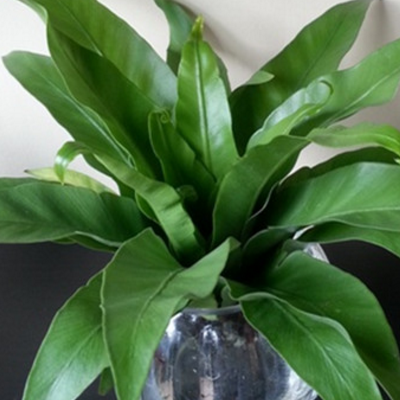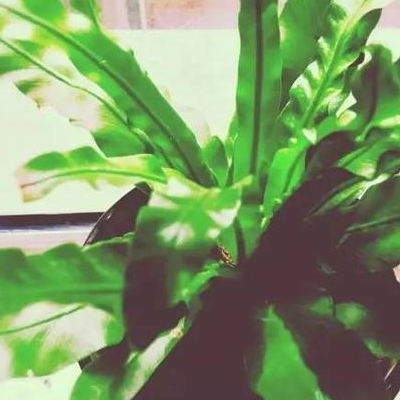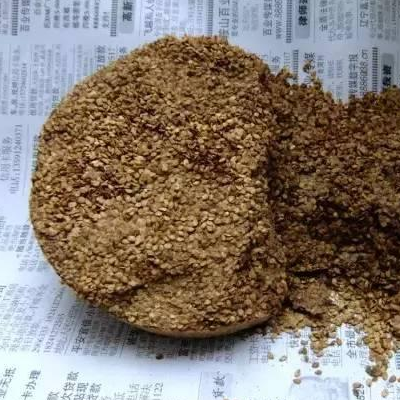Can bird's nest fern be hydroponically cultured? what about the scorched edges of the leaves?
Bird's nest fern, as many people know, can be raised at home. Let's see if bird's nest fern can be hydroponically cultivated. What about the scorched edges of the bird's nest fern leaves:

Can bird's nest ferns be hydroponically cultured:
It can be hydroponically cultured, and the methods are as follows:
1. Temperature
The suitable temperature for the growth of bird's nest fern is 16 ℃-27 ℃. When the temperature drops below 10 ℃, the growth of bird's nest fern will stagnate and lose its leaf color. It is best to keep the temperature above 15 ℃ in winter, and at least not less than 5 ℃ if the conditions are not available, otherwise the leaf edge of the bird's nest fern will turn brown or even freeze to death.
2. Lighting
Bird's nest fern likes semi-shade and is not resistant to strong direct light. it does not need strong direct light in the growing period, mainly scattered light. It is the natural light that comes in from windows and other places, which is naturally scattered indoors. Try to avoid direct sunlight in summer.
3. Humidity
Spray the leaves and surroundings of the bird's nest fern with clear water to maintain humidity. You can spray water twice a day. Or wipe the leaves with a towel, which can not only increase humidity but also clean the leaves of bird's nest ferns.
4. Ventilation
Bird's nest ferns can grow well in a well-ventilated environment. Where water-cultured bird's nest ferns are placed, the doors and windows should be opened regularly to let the air form convection and make the outside fresh air enter the room.
5. Nutrient solution
Generally speaking, we can use the special nutrient solution for hydroponics sold on the market. What we should pay attention to is that after placing the tap water for a day, after its temperature is close to room temperature and the chlorine in the water is volatilized clean, add the nutrient solution in proportion.
6. Change water
If you use tap water, leave it for a day so that the chlorine is emitted and the temperature is moderate. It usually takes about 20 days to change the water for the bird's nest fern in summer, but it can take longer in winter. If the water quality is clean, the bird's nest fern will grow strong and without rotting roots, and there will be no problem for a longer time, but the evaporated water should be replenished in time.
What about the scorched edges of the bird's nest fern leaves:
1. Insufficient or excessive moisture
One of the most important reasons for the scorched edges of bird's nest fern leaves is the lack of moisture, which can also be caused if the surrounding air is too dry.
Treatment: watering methods are different in winter and summer, so it is necessary to distinguish them. The summer temperature is high, the evaporation is fast, must be diligent in watering, if possible, must wash the leaf surface 2 to 3 times a day, at the same time to increase the humidity of the surrounding air, you can sprinkle water to humidify the surrounding ground. When the temperature is low in winter, to keep the basin soil moist, you should spray more water instead of watering it.
Second, lack of light
If the potted bird's nest fern is kept indoors for a long time, it will lead to a lack of light. Treatment: put it in a brightly lit place indoors, not in a dark place for a long time. Regularly exposed to the sun.
III. Insufficient fertilization
If the plant lacks fertilizer, the edge of the leaf will turn brown.
Treatment method: fertilizer is especially needed in the vigorous growth season. The fertilizer composed of nitrogen, phosphorus and potassium can be poured every two weeks to replenish the needed fertilizer in time.
IV. Diseases and insect pests
Nematodes can be said to be a major natural enemy of the bird's nest fern, which can cause the leaves of the bird's nest fern to turn yellow. Treatment method: Kexidan granule is the best choice to control nematodes. It can be ground and sprinkled on the surface of basin soil.
So much for the hydroponic culture of bird's nest fern and the treatment of the charred edges of the leaves, so hurry up and try to raise one.
Can bird nest fern be cultured in water? the method of hydroponic culture of bird nest fern
Bird's nest fern, also known as mountain perilla, is named bird's nest fern because its leaves are radiant and the middle is empty. Generally speaking, bird's nest ferns are cultivated in soil, so can bird's nest ferns be hydroponically cultivated? Today, I would like to tell you about the aquaculture method of bird's nest fern. I hope it can help you.
Can bird's nest fern be hydroponically cultured?
Bird's nest fern is a kind of epiphytic fern, which is a perennial shady herb foliage plant. Bird's nest ferns can be hydroponically cultivated. When hydroponic bird nest ferns are cultivated, they usually need to be familiar with some key points of conservation:
The main results are as follows: 1. The single plant with smaller plant should be selected in hydroponic culture, and then the pot root washing method should be adopted.
2. Bird's nest ferns should often spray water to the leaves during the growing season to improve the humidity of the air.
3, pay attention to the timely addition of fertilizer, when the lack of fertilizer or the temperature is too low, the leaf edge of the bird's nest fern will turn brown.
4. Hydroponic bird nest ferns only need to scatter light, avoid hot sun exposure, and avoid light in summer.
5. Bird nest fern can survive the winter when the winter temperature is above 8 ℃.
6. The bird's nest fern is usually given a change of water for about 20 days in summer, which can take longer in winter.
The method of Aquatic Culture of Bird's Nest Fern
Temperature: the suitable temperature for the growth of bird's nest fern is 16 ℃-27 ℃. When the temperature drops below 10 ℃, the growth of bird's nest fern will stagnate and lose its leaf color. It is best to keep the temperature above 15 ℃ in winter, and at least not less than 5 ℃ if the conditions are not available, otherwise the leaf edge of the bird's nest fern will turn brown or even freeze to death.
Care: bird's nest fern likes semi-shade and is not resistant to strong direct light. during the growing period, it does not need strong direct light, mainly scattered light. It is the natural light that comes in from windows and other places, which is naturally scattered indoors. Try to avoid direct sunlight in summer.
Humidity: spray water on and around the leaves of the bird's nest fern to maintain humidity. You can spray water twice a day. Or wipe the leaves with a towel, which can not only increase humidity but also clean the leaves of bird's nest ferns.
Ventilation: bird's nest ferns can grow well in a well-ventilated environment. Where water-cultured bird's nest ferns are placed, the doors and windows should be opened regularly to let the air form convection and make the outside fresh air enter the room.
Nutrient solution: generally, we can use the special nutrient solution for hydroponics sold on the market. what we should pay attention to is to put the tap water for a day, wait for its temperature close to room temperature and the chlorine in the water to volatilize clean, and then add the nutrient solution in proportion.
Change water: if you use tap water, leave it for a day so that the chlorine is emitted and the temperature is moderate. It usually takes about 20 days to change the water for the bird's nest fern in summer, but it can take longer in winter. If the water quality is clean, the bird's nest fern will grow strong and without rotting roots, and there will be no problem for a longer time, but the evaporated water should be replenished in time.
The above is the method of hydroponic culture of bird's nest fern. Have you all learned it? Please pay attention to more knowledge of home decoration.
What about the broken heart of the bird's nest fern? where is the right place to put it?
Bird's nest fern, this is a lot of people like breeding, home to one, see the mood is good, bird's nest fern broken heart how to do? Where is the bird's nest fern suitable for placement:
What about the broken heart of the bird's nest fern:
1. Lighter
The phenomenon of the rotten heart of the bird's nest fern is relatively light, that is to say, the leaves in the center of the bird's nest fern are not rotten, but the tender leaves on both sides are rotten. At this time, the rotten leaves can be removed, suck up the excess smooth, and let them be maintained in a dry environment for a period of time. After it is dry, normal management is restored. Be sure to control the humidity of the surrounding air.
2. Heavier
If the broken heart of the bird's nest fern is already very serious, it may be difficult to save the plant at this time. At this time, the leaves can be removed decisively, which can reduce stagnant water and reduce plant consumption. It can germinate again by retaining the remaining leaves and intact roots. The leaves can be removed directly and the rotten false bulbs can be removed.
3. Seriously broken-hearted bird's nest fern
When the heart rot of the bird's nest fern is very serious, it may begin to rot from the base of the stem. At this time, you can first take the plant out of the flowerpot, remove the soil and clean it up, then remove all the rotten parts of the plant, disinfect it with alcohol or potassium permanganate solution, and then replant it after drying.
Where is the bird's nest fern suitable for placement:
Small plants raised by water are used to decorate bright living rooms, studies and bedrooms.
The treatment of the broken heart of the bird's nest fern is introduced here, but it must be placed in the right place.
- Prev

Can the breeding method of bird's nest fern be put in the bedroom?
Bird's nest fern, this kind of plant is still a little interesting, can actually be hooked with the bird's nest, what is the breeding method of bird's nest fern? Can bird's nest fern be cultured indoors? breeding method of bird's nest fern: pot conservation, it is a very suitable green plant for pot conservation, choose a flowerpot with good ventilation and drainage
- Next

How to ferment bone meal with cake fertilizer and how to grow flowers
Growing flowers, this is to use flower fertilizer, always feel that the flower fertilizer bought is not good, how to ferment cake fertilizer? How to grow flowers with bone meal and how to ferment cake fertilizer: it can be collected from bean cake residue and turned into organic compost suitable for plant growth after fermentation. Sealed fermentation and ripening of the residue produced by pressing all kinds of oil
Related
- Fuxing push coffee new agricultural production and marketing class: lack of small-scale processing plants
- Jujube rice field leisure farm deep ploughing Yilan for five years to create a space for organic food and play
- Nongyu Farm-A trial of organic papaya for brave women with advanced technology
- Four points for attention in the prevention and control of diseases and insect pests of edible fungi
- How to add nutrient solution to Edible Fungi
- Is there any good way to control edible fungus mites?
- Open Inoculation Technology of Edible Fungi
- Is there any clever way to use fertilizer for edible fungus in winter?
- What agents are used to kill the pathogens of edible fungi in the mushroom shed?
- Rapid drying of Edible Fungi

